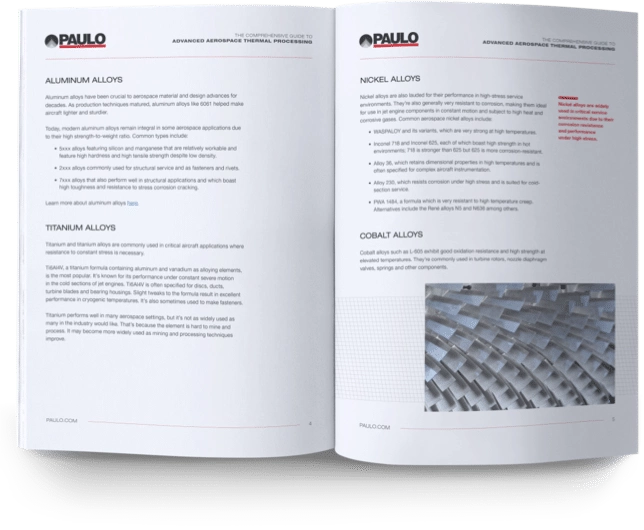It takes a lot of science and a ton of organization to turn drawings and documents into commercial, civilian and military aircraft. The firms who do it well make it seem more like an art form.
It’s hard work—and it’s getting harder. Prices are rising. Supply chains are unpredictable. Maintaining safety is paramount.
At a time when OEMs are under great pressure to meet their obligations while preserving part quality and safety, strong supplier partnerships— including those with thermal processors—can change the game.
Part 1
The importance of precision when executing thermal processing on various aerospace alloys.
Part 2
Key characteristics of heat treaters that have earned Nadcap certification.
Part 3
How thermal processors figure into First Article Inspections and compliance with the AS9102 standard.
Part 4
Investments Paulo has made to ensure it is prepared to meet the evolving needs of aerospace OEMs.

In this guide, we discuss:
- The importance of precision for thermal processing of aerospace alloys.
- Key characteristics of Nadcap-certified heat treaters.
- How thermal processors figure into First Article Inspections and compliance with the AS9102 standard.
- How Paulo meets the evolving needs of aerospace OEMs.
Complete the form above to receive the guide.



